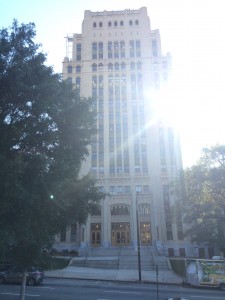
Right across the street from the Georgia State Capitol, Atlanta City Hall has undergone a transformation. The addition of trees and green space surrounding the City Hall is not the only change the city of Atlanta has undergone since the government building opened in 1930. In 1989, a new annex was added to the building as well. As is, the structure,
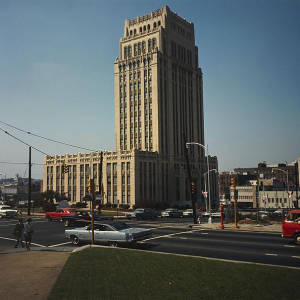
located on Mitchell Street, “looks like a city hall,” as noted by one of my fellow observers. The adjacent blocks are dominated by government buildings and historic churches, many of which have played major roles in shaping the built environment over the decades.
The third and longest occupied of Atlanta’s city halls, the current city hall was built as a monument to advancement as Atlanta settled into its role as the hub of business and commerce of the South. Today it houses meetings, offices, and public services. The outside is almost serene in its beauty with statues and lush grass, and the block is quiet during the afternoon. Across the street, a couple of students hang are standing in front of the pizza restaurant, and a few homeless people sit on the stone wall beside Trinity United Methodist Church, an organization that was a key player in the development of the area. Th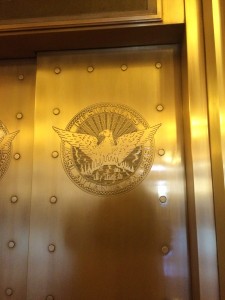 e inside is equally quiet. As I chatted with a security guard about obtaining permission to take
e inside is equally quiet. As I chatted with a security guard about obtaining permission to take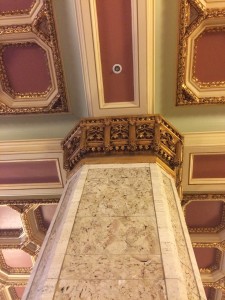 photos, I was astounded by the elegance of the lobby. Ornate pillars held up the gilded ceilings and images of phoenixes, the symbol of Atlanta, emblazoned every appropriate surface. In 1966, Mayor Ivan Allen Jr. brought both national football and baseball teams to Atlanta, and the lobby showcases the first two game balls from each sport. Their display is a symbol of the economic prosperity introduced by one of Atlanta’s most popular and well-known mayors.
photos, I was astounded by the elegance of the lobby. Ornate pillars held up the gilded ceilings and images of phoenixes, the symbol of Atlanta, emblazoned every appropriate surface. In 1966, Mayor Ivan Allen Jr. brought both national football and baseball teams to Atlanta, and the lobby showcases the first two game balls from each sport. Their display is a symbol of the economic prosperity introduced by one of Atlanta’s most popular and well-known mayors.
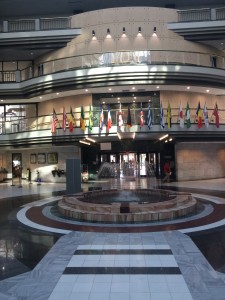
Shorty after the addition of the annex in 1989, the need for more parking for additional employees sparked some controversy. For economic reason, the City of Atlanta wanted to hire private developers to construct parking garages over the two existing parking lots and install mixed income housing developments in the area surrounding City Hall. Central Atlanta Progress (CAP), a downtown civic group, protested. I observed a handful of parallel parking spaces in front of the building, and an apartment complex across the street, along with the pizza restaurant and a few other businesses. There appears to have been a compromise between the two proposals for parking–one still exists while the other was converted into retail space and apartments. This area, like Atlanta, is constantly developing in order to maximize economic benefit, and City Hall is undoubtedly the hub of all such decisions.